History of Cheboksary
Foundation of Cheboksary
Cheboksary is a city with a relatively long history. According to archaeological excavations, an urban-type settlement arose on the site of present Cheboksary at the turn of the 13th-14th centuries, when a Bulgar-Chuvash settlement existed here.
The Russian chronicles mentioned “Cheboksar” as a settlement on the Volga route in connection with the military campaign against the Kazan Khanate in May 1469: “… we spent the night in Cheboksar, and went on from Cheboksar all day and all night, and came to Kazan early dawn …”.
Today, 1469 is considered the year of the founding of Cheboksary and it is reflected on the coat of arms of the city. Some historians insist on a revision of this date. Most probably the settlement was founded by migrants who came from the town of Suvar of Volga Bulgaria after the Mongol invasion in the middle of the 13the century.
The settlement, as well as the lands surrounding it, came under the control of the Tsardom of Russia after the troops of Ivan the Terrible captured Kazan in 1552 and the Kazan Khanate ceased to exist. In 1555, in this settlement named Cheboksary, a wooden fortress was laid. Punitive functions were assigned to the garrison of the fortress to “pacify the discontented” and collect taxes from the local population. In 1625, there were 458 soldiers in Cheboksary.
More historical facts…
Cheboksary in the 17th-18th centuries
The Russian government kept a significant garrison in Cheboksary in the event of a possible Tatar rebellion. The location of the town on the banks of the Volga provided advantages for the development of trade. The increasing spread of Orthodoxy and the mass baptism of the Chuvash people led to the architectural heyday of the town - Cheboksary was full of churches and temples. It grew mainly due to Russian colonists, the share of the Chuvash people was small.
The next period of the history of Cheboksary covers the time from the 1650s to the end of the 18th century and is characterized by the development of stone architecture. After a big fire that destroyed almost the entire town, a stone church was built - Vvedensky Cathedral (1651-1657). This is the first stone architecture monument that has survived to this day.
Since the end of the 17th century, the military significance of Cheboksary decreased. In 1704, after another fire, it was decided not to rebuild the fortress. The construction of stone buildings continued in the 18th century. A lot of stone churches were built at the expense of parishioners. Merchants built two-story and one-story stone houses. Stone churches and other buildings largely transformed the town of Cheboksary.
In 1723, there were 1,924 taxed people in Cheboksary (men). The middle of the 18th century became the period of the highest development for Cheboksary. In 1767, Empress Catherine II, sailing along the Volga River past Cheboksary, expressed her admiration for the picturesque views of the town and said that Cheboksary “in everything is better than Nizhny Novgorod”.
Later, the town could not withstand competition with such large trade centers as Nizhny Novgorod and Kazan. In 1781, Cheboksary acquired the status of a provincial town of the Kazan Governorate and received a coat of arms. Five flying wild ducks depicted on it meant their abundance in the vicinity of the town. At the end of the 18th century, Cheboksary was the largest urban settlement in the territory of Chuvashia.
Cheboksary in the 19th-20th centuries and beyond
At the beginning of the 19th century, Cheboksary entered a period of stagnation. Over the course of the century, urban population growth was less than a thousand people. In 1879, 4,498 people lived in the town (2,308 women and 2,190 men), there were 783 houses (including 33 stone houses), 91 shops and a store, 3 schools, 2 hospitals, 1 bank. At the beginning of the 20th century, about 5,000 thousand people lived in Cheboksary.
After the creation of the Chuvash autonomy in 1920, Cheboksary becomes its capital. In 1925, the autonomy was transformed into the Chuvash Autonomous Soviet Socialist Republic. In 1926, the population of Cheboksary was about 9,000 people. The status of the capital had a positive effect on the development of the city. In 1940, its population was more than 40,000 people, in 1959 - about 104,000 people.
During the Second World War, Kharkov and Moscow electrical equipment plants were evacuated to Cheboksary. On November 4, 1941, the city was attacked - in the dark, one German plane dropped about 20 bombs, as well as propaganda leaflets, 2 people were killed and about two dozen were injured. In total, 13,632 residents of Cheboksary were called up to the Red Army, 5,038 of them died in the battles, another 523 people died from wounds and illnesses, 2,567 went missing.
In the postwar years, a number of new city-forming industrial enterprises were built. In the late 1950s and early 1960s, Cheboksary grew rapidly. In 1967, Chuvash University was founded. In the 1970s, the Cheboksary Tractor Plant was built. In 1970, the population of Cheboksary was about 216,000 people.
In 1968, the construction of the Cheboksary Hydroelectric Station began. By 1987, in connection with this construction, an artificial bay was created in the city center on the site of several blocks of old buildings. A lot of historical buildings were lost. In 1987, the population of the city was about 414,000 people.
Since 1992, Cheboksary is the capital of the Chuvash Republic, which is part of the Russian Federation. In 2019, the city celebrated its 550th anniversary.
Pictures of Cheboksary
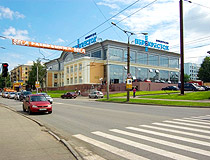
Perekrestok supermarket in Cheboksary
Author: Dmitry A.Shchukin
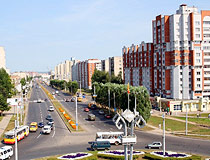
Summer in Cheboksary
Author: Peter Alendeev
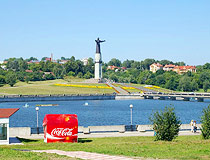
Monument Mother-Patroness in Cheboksary
Author: Dmitry A.Shchukin
Cheboksary - Features
The city of Cheboksary is located on the Volga Upland on the right bank of the Cheboksary reservoir of the Volga River. Cheboksary has a satellite city - Novocheboksarsk. Together they form an agglomeration with a population of more than 680 thousand people.
The climate of Cheboksary is temperate continental. Winter is frosty, snowy, lasting an average of five months. Summer is warm, sometimes hot, lasting three months. The average temperature in January is minus 12.9 degrees Celsius, in July - plus 18.8 degrees Celsius.
According to the 2010 census, about 59% of the population in Cheboksary were Chuvash, about 32% - Russians, as well as Tatars (1%), Ukrainians (0.5%), Mari (0.4%), Mordvinians (0.4%).
The city economy is characterized, first of all, by developed industry. The leading industries of Cheboksary are electrical energy equipment, engineering, and food processing. The economic and geographical position of the city is characterized by the presence of the Nizhny Novgorod-Cheboksary-Ulyanovsk highways, the road to Kazan and Yoshkar-Ola going along the dam of the Cheboksary Hydroelectric Station. Two federal highways pass through Cheboksary: M7 Volga and P176 Vyatka.
The distance to Moscow is 671 km, Kazan - 152 km, Nizhny Novgorod - 243 km, Ulyanovsk - 244 km, Yoshkar-Ola - 93 km. From Kazan station in Moscow there is a branded train “Chuvashia” running to Cheboksary. The airport of the city offers regular flights to Moscow and St. Petersburg. Public transport is represented by trolleybuses, buses, minibuses, and taxis.
Cheboksary has a large river station. It is a place to stop during the Volga River cruises. Such destinations as Astrakhan, Rostov-on-Don, Volgograd, the Caspian and the Black seas are located downstream of the Volga south of the city; Nizhny Novgorod, Moscow, Yaroslavl, and other northern regions of Russia are reachable if you sail upstream of the Volga west of Cheboksary.
Cheboksary is regularly included in the list of the cleanest and most comfortable cities in Russia. There is a lot of greenery: dozens of public gardens, groves, shady alleys, as well as specially protected natural sites.
The City Day of Cheboksary is celebrated on the third Sunday of August.
Main Attractions of Cheboksary
Monument “Mother-Patroness” (2003). On a large hill in the western part of the embankment of the Cheboksary Bay there is a monument symbolizing Chuvashia - a woman in national clothes embracing the entire city of Cheboksary.
This is the main monument of Chuvashia, which rises 46 meters above the bay and is one of the symbols of the city. The phrase “Blessed are my children who live in peace and love” is written in two languages (Russian and Chuvash) on a tablet attached to the bottom of the pedestal.
The Cheboksary Bay, an artificial bay created in the city center during the construction of the Cheboksary Hydroelectric Power Station, is probably the most interesting part of Cheboksary. Most of the attractions of this city, monuments of architecture and culture, as well as cafes, bars, and restaurants are concentrated around it. In the warmer months, you can sail on boats and catamarans here.
Tractor History Museum - a science and technology museum with over 50 wheeled and tracked vehicles for agricultural and industrial purposes. The museum also has a collection of 600 models on a scale of 1:42 of various tractor equipment, as well as other exhibits. Mira Avenue, 1, Building #2.
Chuvash National Museum - the largest repository of monuments of nature, history, material and spiritual culture of the Chuvash and other ethnic groups. Here you can see a large number of different exhibits from the Stone Age to the present day (archeology, history, art, technology, etc.), folk costumes, embroidery, and jewelry of the Chuvash people.
Merchant Efremov Boulevard - a pedestrian street (a renamed part of Karla Marksa Street) in the historic district of Cheboksary. There are cafes and shops in buildings of the 19th century here, as well as souvenir tents. The street is decorated with monuments, flower beds, and other elements of landscape design.
One of them is an architectural composition of three stones of “the sun, love, and happiness” brought from the Taganai Range of the Southern Urals. Here you can also find a monument to Ostap Bender and Kisa Vorobyaninov - the characters of Ilf and Petrov’s novel “12 Chairs”, the Beer Museum, the Chuvash Embroidery Museum (Karla Marksa Street, 32), the Chuvash State Academic Drama Theater.
Vvedensky Cathedral (1657) - the oldest building in Cheboksary and Chuvashia, an architectural monument of federal significance. Despite numerous restorations, the church and its free-standing bell tower almost completely retained their original appearance. Konstantina Ivanova Street, 21.
Church of the Assumption of the Mother of God (1763) - one of the symbols of Cheboksary and the most recognizable building in the city. The main feature of this building is the fact that the first floor that we see today is actually its second floor.
During the construction of the Cheboksary Hydroelectric Station and the subsequent rise of the level of the Volga River, the original first floor of this church was filled with sand, and the area around it was concreted to prevent flooding and destruction of the monument. Nearby, you can find the complex of buildings of the Holy Trinity Orthodox Monastery and the Church of Archangel Michael (1702). Konstantina Ivanova Street, 1.
Chuvash State Art Museum. Here you can see the works of icon painting, Russian and foreign art of the 18th-20th centuries, Chuvash artists of the 20th-21st centuries, folk and decorative art of Russia and Chuvashia. Kalinina Street, 60. The department of Russian and foreign art is located at Konstantina Ivanova Street, 4.
Memorial Park “Victory”. Located on a high hill near the bank of the Volga, in the most beautiful place of Cheboksary, it is dedicated to the memory of soldiers who did not return from the fronts of the Second World War, the wars in Afghanistan and Chechnya, the liquidators of the Chernobyl accident. The best observation deck in Cheboksary is located here. There is also an open-air museum of military equipment.


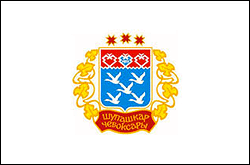
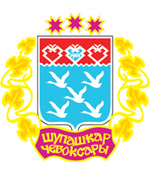
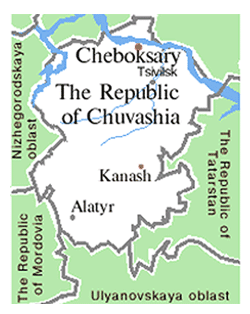



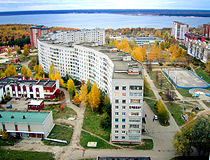
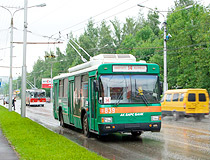
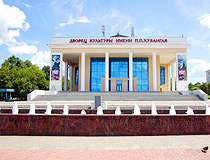
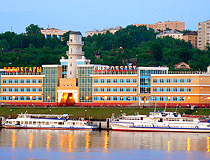
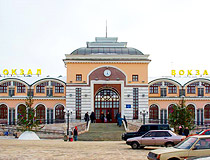
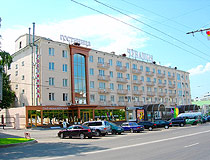
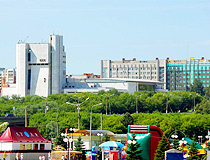
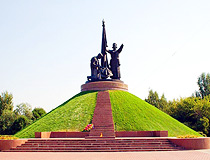
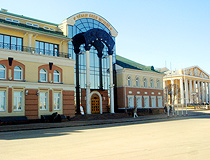
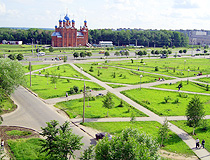
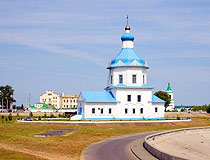
The comments of our visitors
All 7 comments